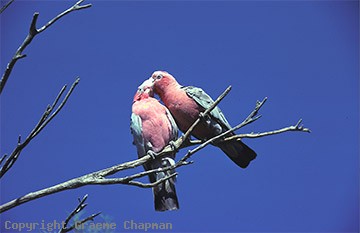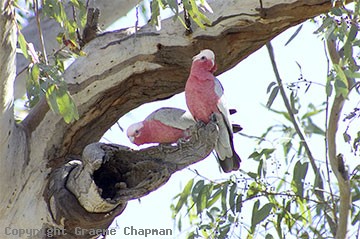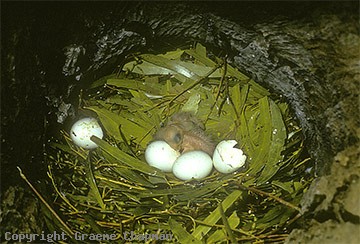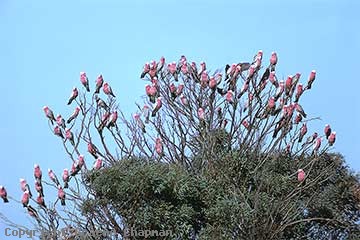
Since the advent of European settlement and subsequent agriculture, Galahs have spread in Australia to such an extent, particularly to coastal regions from the inland, that they have become an everyday bird to all except inner city dwellers. That such a beautiful bird can be regarded as a pest in many regions may seem amazing to some non-Australians, but that indeed is the case. Nevertheless, seeing a flock of hundreds of Galahs wheeling together in a rose-coloured cloud against a blue afternoon sky is still a sight to behold to all but the most disillusioned of farmers.
There are two subspecies of Galah, basically eastern and western, best distinguished by the face patterns of the males (see pics 273216 and 273217D). Once adult, which can take three years, galahs pair for life. A very successful species, they have a large repertoire of calls (almost one for every occasion) and have adapted well to the changes in the landscape which have been wrought in over two centuries of development, to such an extent now that in many areas their chief sustenance is grain derived from cultivation of one sort or another.
I could write a lot about the life history of the Galah, having been lucky enough back in the 1970's to take part in a research programme into their biology, carried out by CSIRO in Western Australia. The results of that research have been published for the everyday reader in a book entitled "The Galah" by Ian Rowley (ISBN 0 949324 27 2), now long out of print but available in libraries.




